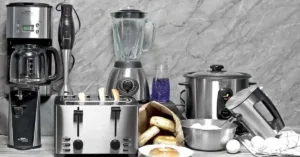Built-In Oven Installation Tips for Modern Kitchens
A built-in oven is one of the most stylish and practical additions you can have in a modern kitchen. Unlike traditional ovens that sit on countertops or as separate units, built-in ovens are fitted neatly into your kitchen cabinets or walls, giving your space a sleek and clean look. They save counter space, make cooking easier, and add a touch of elegance to your home.
Here are some simple and easy-to-follow tips for installing a built-in oven in your modern kitchen.
-
Plan the Location Carefully
Before you buy or install a built-in oven, think about where it will go. The location should be:
- Close to where you prepare food, so you don’t have to walk far while cooking.
- Away from direct sunlight, as heat from the sun can affect the oven’s performance.
- Near a proper power connection or gas supply, depending on the oven type.
Many modern kitchens place the oven at waist or chest height. This makes it easier to take hot dishes in and out without bending too much.
-
Check the Measurements
The most common mistake people make is buying a built-in oven without checking if it fits the cabinet space. Measure:
- The height, width, and depth of the available space.
- The space behind the oven for wires or gas pipes.
It’s also a good idea to leave a little extra space around the oven for proper ventilation.
-
Ensure Proper Ventilation
Built-in ovens create heat when cooking, and that heat needs to escape. Without proper ventilation, the oven can overheat, and nearby cabinets may get damaged.
Make sure there’s space behind and above the oven for air to flow.
Follow the ventilation gap guidelines given in the oven’s instruction manual.
-
Use a Strong and Level Surface
The cabinet or shelf where the oven will sit must be strong enough to hold its weight. A built-in oven is heavy, especially when you add food inside. Also, the surface should be level so the oven door closes properly, and food cooks evenly.
-
Hire a Professional Installer
While some people like to do it themselves, built-in ovens often require proper wiring or gas connections. A trained technician ensures the oven is installed safely and works as it should. They will also check that all safety measures, such as earthing for electrical ovens, are in place.
-
Think About Accessibility
When planning your oven’s location, make sure the door can open fully without hitting anything. You should also have enough space in front of the oven to place hot trays or dishes immediately after removing them.
-
Mind the Surrounding Materials
Avoid placing the oven next to appliances that get affected by heat, such as refrigerators or plastic cabinets. Choose heat-resistant materials for the cabinet around the oven to avoid damage over time.
-
Test Before Final Placement
Before you fix the oven in place permanently, connect it and run a short test cycle. This way, you can check if it heats up properly, the door closes well, and there are no strange sounds or smells.
-
Follow the Manual Instructions
Every oven comes with its own installation guidelines. Even if you’ve installed one before, the requirements may differ for another model. Reading the manual can prevent mistakes that could cost you time and money.
Conclusion
A built-in oven can make your modern kitchen look stylish and help you enjoy cooking even more. But to get the best performance and safety, the installation must be done with care. From checking the measurements to ensuring ventilation and hiring a professional, each step matters. A little planning before installation will save you from bigger problems later – and help your oven last for years.
For quality appliances that fit well into modern kitchen designs, Generaltec offers a range of built-in ovens to match with performance.
FAQs
-
Can I Install A Built-in Oven By Myself?
You can if you have the right tools and knowledge, but it’s safer to hire a professional for proper wiring and fitting.
-
Do Built-in Ovens Need Ventilation?
Yes, they do. Without proper ventilation, heat can build up and damage the oven or cabinets.
-
How Much Space Should I Leave Around The Oven?
Follow the spacing instructions in the oven manual, but usually, a few centimetres around the sides and back are needed.
-
Can I Place My Built-in Oven Under The Countertop?
Yes, as long as there’s enough ventilation and the surface is strong enough to hold it.
-
How Long Does Installation Take?
Professional installation usually takes 1-2 hours, depending on the kitchen setup.















Add comment